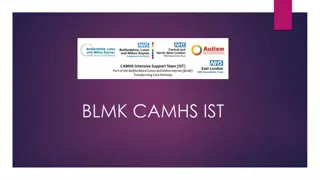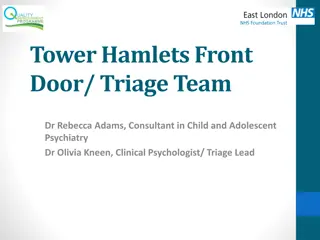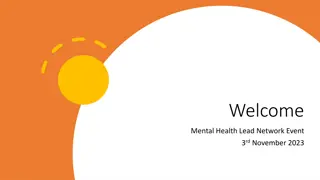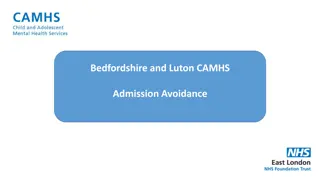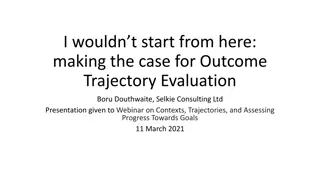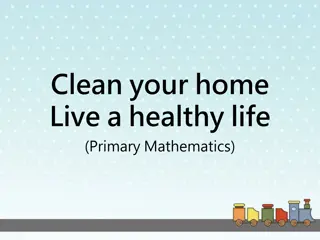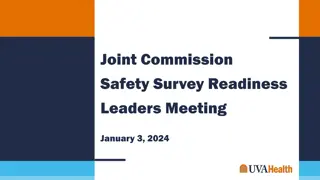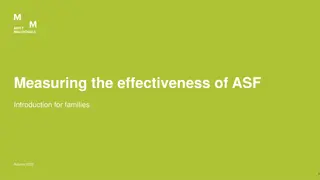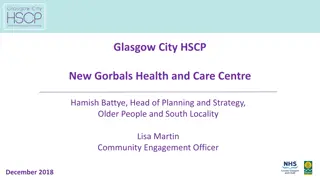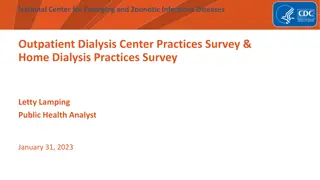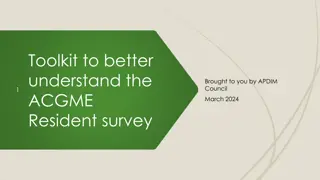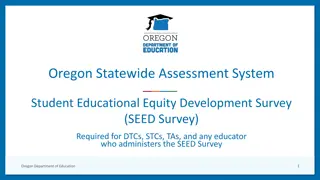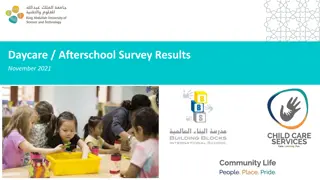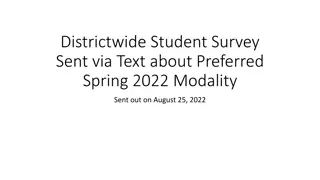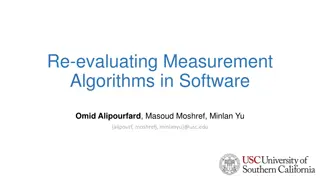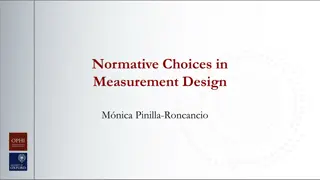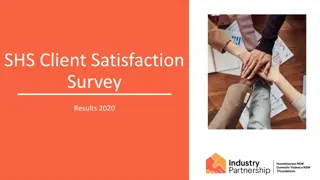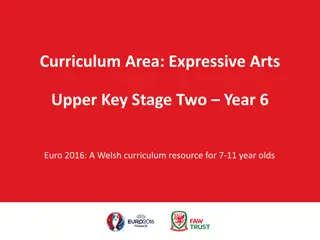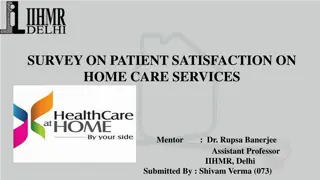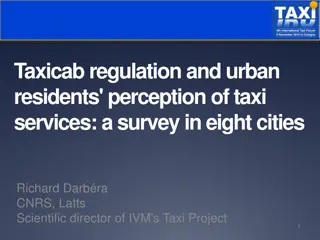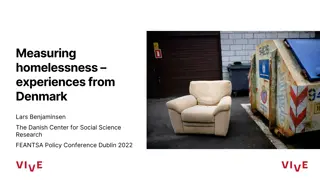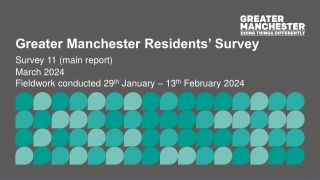Survey on Routine Outcome Measurement in UK CAMHS Services
This study by Holly Bear, a PhD student at UCL & EBPU, explores the current practices and perspectives towards routine outcome measurement (ROM) in UK Child and Adolescent Mental Health Services (CAMHS). The research delves into the barriers and facilitators to utilizing outcome measurement in practice, using a survey designed by CORC. The survey, based on the COM-B framework, gathered insights from staff across various services and analyzed responses between January 2016 and May 2017. By understanding the views and practices of CAMHS staff, this study aims to improve the utilization of outcome and feedback measures to enhance clinical outcomes.
Download Presentation

Please find below an Image/Link to download the presentation.
The content on the website is provided AS IS for your information and personal use only. It may not be sold, licensed, or shared on other websites without obtaining consent from the author. Download presentation by click this link. If you encounter any issues during the download, it is possible that the publisher has removed the file from their server.
E N D
Presentation Transcript
Current practice and perspectives towards routine outcome measurement (ROM): a survey across UK CAMHS services Holly Bear, PhD Student, UCL & EBPU
Overview Background Research question Survey development Method Results Implications
Background Sustained effort to systematise outcome measurement along with a growing expectation for services to collect and report outcomes. The consistent utilisation of outcome measurement & monitoring can improve clinical outcomes. The repeated use of CORC measures as low as 10% (HoNOSCA, CGAS & SDQ; Batty et al., 2013).
Research question The overarching research question of interest is: What are the individual and service-level barriers and facilitators to the utilisation of routine and feedback measurement in practice?
Survey design Designed by CORC to evaluate the views and current practice of staff in relation to the use of outcome and feedback measures in CAMHS. Based on the COM-B framework Comprised of 42 items & inclusive of multiple- response, categorical, open-ended and Likert scale items.
The COM-B Model Physical & psychological Automatic, reflective & habitual Physical & social environment Michie, S., van Stralen, M. M., & West, R. (2011)
Survey design How easy is it to access outcome measures and feedback tools in sessions with service users? Physical opportunity I find outcome measures and feedback tools useful Reflective motivation Decide when outcome measures and feedback tools are appropriate to use and when they are not Psychological capability
Method Cross-sectional survey design Sent to all staff who provide services for children & young people, manage those that do so, or work with outcome data across 5 services which opted in for self-assessment. Responses collected between Jan 16 & May 17 Analysed based on the COM constructs
Results Participant characteristics (n=249 respondents, k=5 services) Gender female, n (%) 156 (80.8) Professional role, n (%) Clinician/practitioner/ therapist/ medical professional 153 (61.4) Administrator/secretary/receptionist 30 (12.0) Nurse 23 (9.2) Manager/ clinical lead 16 (6.4) Allied Health Professional (e.g. social worker) 13 (5.2) Other (Nursery Nurse/ Youth Worker/ Volunteer Coordinator) 8 (3.2) Trainee/ assistant psychologist 5 (2.0)
Results 75.1% reported direct use of outcome & feedback measures in practice How often do you use outcome and feedback measures as part of your work? n (%) None of the time 2 (1.1) 86 (47) Some of the time 84 (45.9) Nearly all of the time 65 (35.5) 97 (53) All of the time 32 (17.4) N/A 1 (0.5) Total 184 (100)
Capability (psychological & physical) What training have you received in the use of outcome and feedback measures? (external about single measure)? No training (61.6%) Would you like to know more about outcome & feedback measures? Yes (83.9%), No (16.1%) Would an increased knowledge about outcome & feedback measures make you more likely to use them? Yes (80.45), No (16.3%)
Capability (psychological & physical) What training have you received in the use of outcome and feedback measures? (external about single measure) Had training Not had training None/ some of the time 19 (12.7%) 50 (33.3%) 69 How often do you use outcome/ feedback measures? Nearly/ all of the time 38 (25.3%) 43 (28.7%) 81 57 93
Motivation (Automatic, reflective & habitual) There is a strong evidence base for outcome & feedback measures? Agree/ strongly agree (68.1%) I am confident about how to use outcome measures and feedback tools as part of my work? Agree/strongly agree (72.2%) Service users are happy to complete outcome and feedback measures? Agree/strongly agree (57.3%)
Motivation (Automatic, reflective & habitual) I am confident about how to use outcome measures and feedback tools as part of my work? Agree/ strongly agree None/ some of the time (27.5%) Do not agree 49 36 (20.2%) 85 (47.8%) How often do you use outcome/ feedback measures? Nearly/ all of the time 77 (43.3%) 13 (7.3%) 93 (52.2%) 126 (70.8%) 49 (27.5%)
Opportunity (physical & social environment) How easy is it to access the results from previous sessions at the subsequent sessions? Not very/ at all easy (44.5%) How easy is it to input outcomes and feedback data onto a central system or database within your organisation? Not very/ at all easy (44.5%) Staff have a shared vision which includes using routine outcome measurement to support service improvement? Agree/ strongly agree (38.8%)
Implications & next steps To what extent do these factors (COM) predict/ are associated with behaviour (B)? Development of a behaviourchange intervention based on the Behaviour Change Wheel (BCW; Michie et al., 2011) Inform practice recommendations & improve outcomes
The Behaviour Change Wheel Michie, S., van Stralen, M. M., & West, R. (2011) Increase knowledge & understanding Alter physical & social culture Increase means & reduce barriers Skills development
Thankyou Acknowledgements CORC members & respondents Daniel Pugh Kate Dalzell


